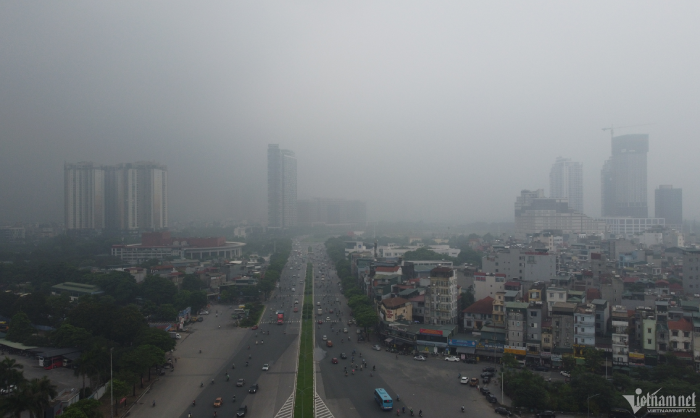Hanoi has recently recorded alarmingly high levels of air pollution, at times ranking as the second most polluted city in the world. In response, the government and various ministries have introduced practical, phased, and coordinated solutions to protect public health amid escalating urban air quality concerns.

On July 14, Hanoi's air quality index (AQI) reached 167 – a red alert level indicating dangerous pollution levels. A higher AQI corresponds to more severe air pollution. Experts identify fine particulate matter, including PM10, PM2.5, and PM1, as the primary contributors to the city's poor air quality, which has remained consistently high in recent years.
According to the World Health Organization (WHO), air pollution is linked not only to respiratory diseases but also to increased risks of asthma, stroke, lung cancer, cardiovascular conditions, skin disorders, and impacts on the nervous and immune systems. Vulnerable groups such as the elderly and pregnant women are especially at risk.
Associate Professor Nguyen Thi Lien Huong, Deputy Minister of Health, shared, “I have seen patients develop chronic obstructive pulmonary disease (COPD) after years of exposure to fine dust pollution. Prolonged inhalation of fine particles severely damages the respiratory system, gradually leading to serious illness.”
She cited WHO’s recommended safe limit for fine dust exposure as 12 micrograms per cubic meter, yet Hanoi has far exceeded this threshold on heavy pollution days. “With higher disease rates come increased healthcare costs, economic strain on families, and broader negative impacts on national development,” she added.
Deputy Director of the Central Lung Hospital, Associate Professor Vu Xuan Phu, confirmed a clear link between long-term air pollution exposure and serious lung illnesses, including cancer. Meanwhile, Hanoi resident Pham Thi Minh Khoa described living in constant fear of dust and fumes: “Despite living in a main street home, we keep our windows shut all the time. During peak traffic, the air becomes unbearable. We start coughing, struggling to breathe, and constantly get sick.”
Major sources of air pollution include vehicle emissions, especially from fossil-fuel-powered engines, urban traffic, industrial activities, construction, residential burning, the use of coal stoves, and agricultural practices like straw burning. Climate and weather patterns also contribute.
While Vietnam has taken steps to address air pollution, challenges remain: insufficient policy implementation resources, limited scientific and technical capacity, and a lack of intersectoral collaboration. Existing measures are often fragmented, lacking prioritization or urgency. Addressing air pollution will require coordinated intersectoral and regional efforts involving all political levels, businesses, and communities.
The draft National Action Plan on Air Quality Management (2025–2030), prepared by the Ministry of Agriculture and Environment, outlines specific goals: reduce PM2.5 levels by at least 20% by 2030 compared to 2024 averages; control emissions from industry, transport, and open burning; promote green urban development; and increase international cooperation and public awareness. The Ministry of Health will closely collaborate with the Ministry of Agriculture and Environment to ensure effective implementation.
Prime Minister acts decisively to cut pollution
On July 12, Prime Minister Pham Minh Chinh signed Directive No. 20/CT-TTg, outlining urgent actions to combat severe environmental pollution. The directive includes a mandate for Hanoi to ban fossil-fuel-powered motorcycles within Ring Road 1 starting July 2026.
The Ministry of Public Security has been tasked with identifying major pollution sources, investigating environmental violations, and enforcing compliance. All motorbikes and scooters using gasoline or diesel fuel will be banned from Ring Road 1 from July 1, 2026. By January 1, 2028, these restrictions will expand to Ring Roads 1 and 2, with further expansion to Ring Road 3 starting in 2030. Private fossil-fuel-powered cars will also be limited.
Regarding waste treatment, Hanoi must submit a pollution treatment plan for its rivers and canals by Q3 2025, relocate polluting facilities from residential zones by 2028, and pilot a ban on single-use plastics in restaurants and hotels within Ring Road 1 by Q4 2025. Investment in advanced waste treatment plants is prioritized to reduce landfill reliance and prevent environmental contamination.
Directive 20/CT-TTg marks a bold and strategic shift toward greener urban development and cleaner air. Its impact is expected to reshape transportation infrastructure and push forward Hanoi’s environmental reform agenda.
PV